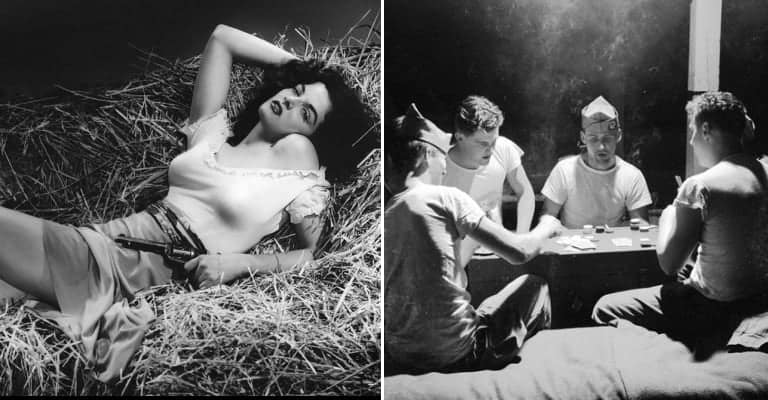When most of us think about Pin-up Girls, your mind most likely goes to vintage vixens from World War II, and the famous women who made the genre popular. But the tradition actually started as far back as the 1800’s, and it was growing its roots in American and French advertising long before artists decided to cross the line and publish illustrations of scantily clad girls on a regular basis.
Even though many modern-day onlookers might consider these drawings to be objectifying women’s bodies, historians actually consider pin-up art to be an extremely important tool for feminism. These drawings and photographs were powerful forms of propaganda for good. They helped make it normal for men to see women wearing pants, going out in public without a male escort, and even joining the workforce. Today, the suggestive poses are actually very tame compared to much of what we see in the media in modern times, as well. Let’s go through this long and fascinating history of the pin-up girl.
18. Oddly Enough, Bicycle Ads Started a Sexy Craze

In the late 1800’s, women began to ride around on bicycles. This was actually a big deal, because it meant that ladies finally had the ability to go around town without walking on foot, and without being in the company of a man. Women started calling bicycles “freedom machines”, because they liberated ladies and completely changed their lives. Bicycle advertisements began to illustrate women on bikes.
Men felt threatened by this idea, and doctors began to speak out against bicycles, saying that the seat would damage their lady-parts and made them too “excited”. Women also started to go around town wearing their bloomers, because pants didn’t exist for women back then, and it was a lot easier to ride a bike without a long skirt getting caught up in the mechanism of the bike. Of course, this caused an outcry among those who believed this was indecent exposure. Looking back, these ladies were still very covered up, but it was still a small step forward.

